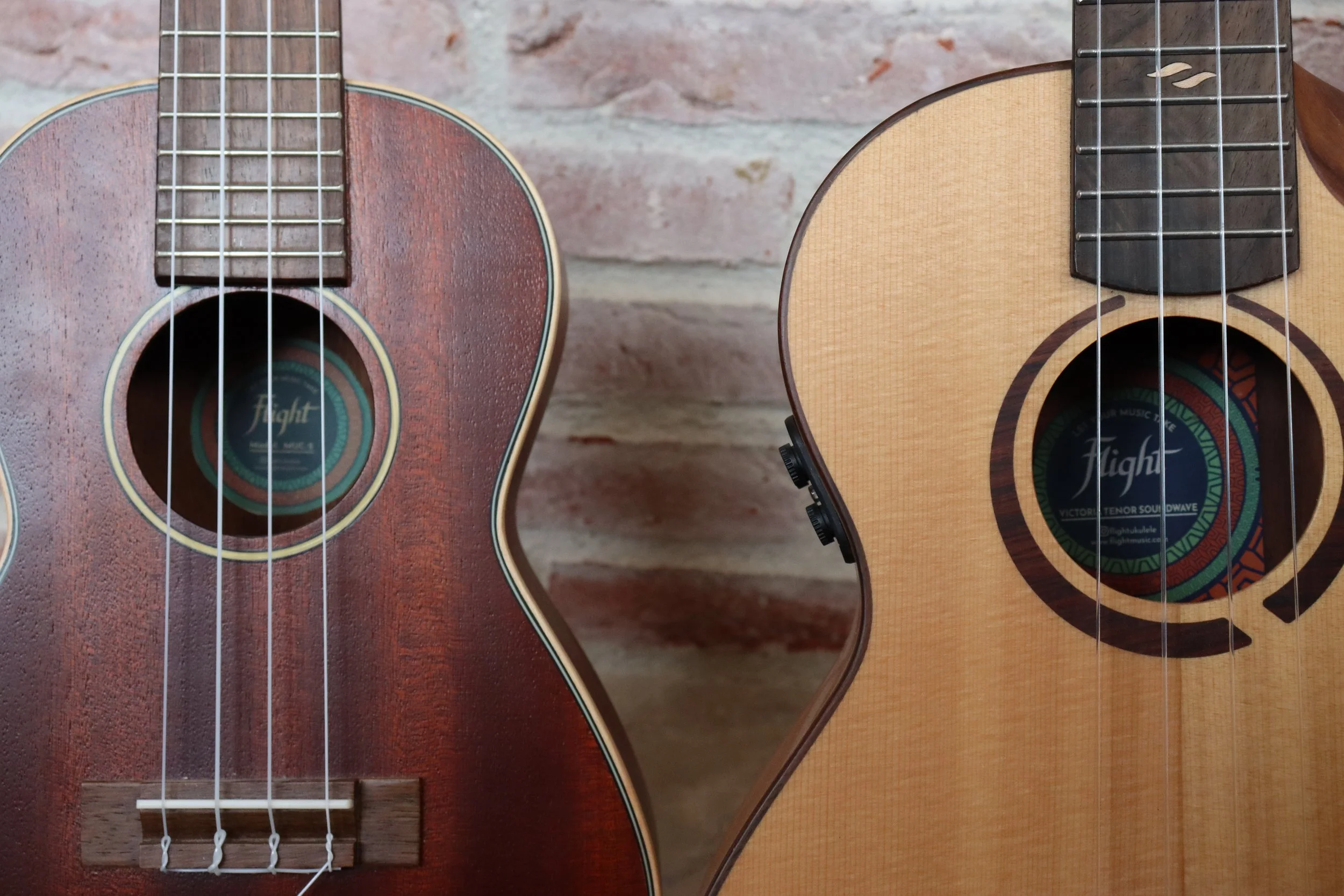The choice of wood used in the construction of a ukulele plays a significant role in shaping its sound, tone, and overall character. From the warmth of mahogany to the brightness of spruce, each type of wood imparts unique sonic properties that contribute to the instrument's sound quality and playing experience. Whether you're a beginner searching for your first ukulele or an experienced player looking to upgrade, understanding the characteristics of different types of ukulele wood can help you make an informed decision and find the perfect instrument to match your musical preferences. In this guide, we'll explore some of the most common types of ukulele wood and how they affect sound quality.
1. Mahogany
Mahogany is a popular choice for ukulele construction, prized for its warm, rich tone and balanced sound. Known for its excellent projection and sustain, mahogany ukuleles produce a smooth, mellow sound with pronounced midrange frequencies and a pleasing harmonic complexity. Mahogany ukuleles are favored by players of all styles, from traditional Hawaiian music to contemporary folk and indie rock.
2. Koa
Koa is native to Hawaii and is often referred to as the "Hawaiian mahogany." prized for its stunning grain patterns, rich color, and sweet, mellow tone. Koa ukuleles produce a warm, balanced sound with a pronounced midrange and a touch of brightness in the upper frequencies. prized for their resonance, sustain, and unique tonal character, Koa ukuleles are highly sought after by collectors and players alike.
3. Spruce
c is known for its bright, articulate tone and excellent projection, making it a popular choice for ukulele soundboards. Spruce-topped ukuleles produce a crisp, clear sound with plenty of volume and definition, making them ideal for players who prefer a brighter, more assertive tone. Spruce ukuleles are versatile instruments that excel in a wide range of musical styles, from bluegrass and country to pop and rock.
4. Cedar
Cedar is valued for its warm, mellow tone and quick response, making it a popular choice for ukulele soundboards. Cedar-topped ukuleles produce a rich, expressive sound with a strong emphasis on the midrange frequencies and a smooth, velvety texture. prized for their dynamic range, sensitivity, and tonal complexity, Cedar ukuleles are favored by fingerstyle players and singer-songwriters.
5. Maple
Maple is known for its bright, focused tone and excellent sustain, making it a popular choice for ukulele necks and bodies. Maple ukuleles produce a clear, articulate sound with a tight, punchy bass response and sparkling treble frequencies. prized for their clarity, projection, and note definition, Maple ukuleles are well-suited to styles such as jazz, blues, and fingerstyle playing.
Conclusion
The choice of wood used in a ukulele can have a significant impact on its sound quality, tone, and playing experience. Whether you prefer the warm, mellow sound of mahogany, the sweet, balanced tone of koa, the bright, articulate sound of spruce, the rich, expressive sound of cedar, or the clear, punchy sound of maple, there's a ukulele wood that's perfect for you. By understanding the characteristics of different types of ukulele wood, you can make an informed decision and find the perfect instrument to match your musical preferences and playing style.
Understanding how different types of ukulele wood affect sound quality can help you make an informed decision when choosing your next instrument. Happy playing!



 Harley Benton GS-Travel Mahogany
Harley Benton GS-Travel Mahogany
 Taylor GS Mini Mahogany
Taylor GS Mini Mahogany




 Cordoba Fusion Orchestra CE Cedar
Cordoba Fusion Orchestra CE Cedar
 Felipe Conde CE-3 Cedar
Felipe Conde CE-3 Cedar